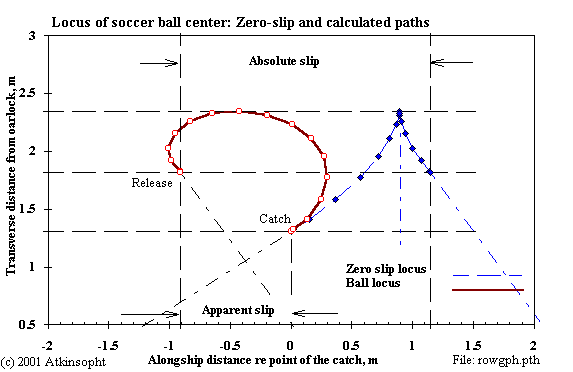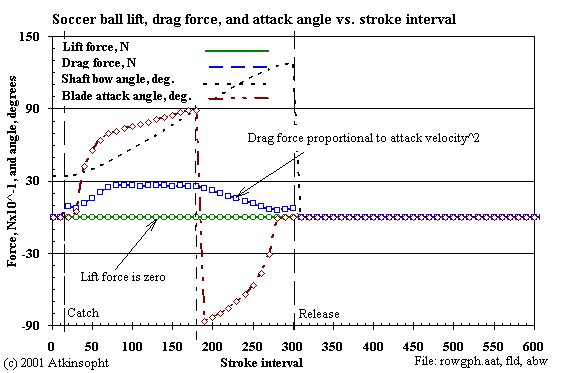 Figure 1
Figure 1
As a matter of interest (and of humor) I have run the ROWING model for an eight at 30 1/min with the oarblades replaced with the characteristics of (neutral density) soccer balls (at Re= 9.0E5; Cd= 0.3, Cl= 0.0). The coefficient of lift is everywhere zero and that of drag everywhere about 0.3.
 Figure 1
Figure 1
The balls, being blunt, plow into the water at the catch and suck back on the release thus stealing from the propulsive force. These ball forces are large in relation to the beginning rise and ending wane of the oarblade propulsion; an effect easily seen in Figure 1 (arrows).
 Figure 2
Figure 2
Owing to the hugely increased absolute slip the shell speed isn't what it might be but the "blades" seem to work well enough. Somebody take a a photo' of this eight! I'm small; I'll be the cox.
 Figure 3
Figure 3
In the plot of soccer ball lift and drag above notice that the lift force is everywhere zero. The drag force profile is similar to the attack velocity profile (not shown) as would be expected since the force is independent of the attack angle.
Notice, too, that owing to the relatively small drag the drive time (soccer balls in water) is very short because they are "ripping through" under the heavy oarhandle pull force. I can't find the phenomenon of "ripping" defined anywhere although it probably is related to an inability of the blade to remain fully engaged with the surface water. I would appreciate having some definitions here.